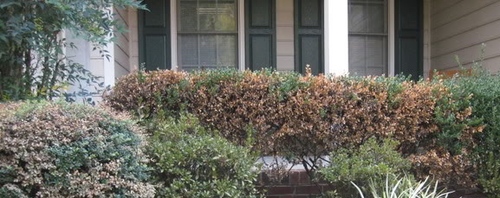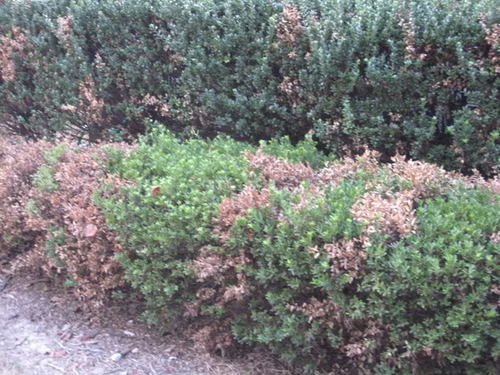If a contractor tells you that their product breaks down into salt, they are using bleach. Salt is made from sodium chloride (a main ingredient in chlorine bleach). Salt is EXTREMELY damaging to landscaping. How?
When plants in landscaping absorb sodium from salt, the roots become dehydrated, changing their physiology which causes extreme stress in plants. The roots absorb the chloride and transport it to the leaves where it accumulates and interferes with chlorophyll production and photosynthesis. Just as we know road salt is toxic to plants, we know that any product (such as chlorine bleach) that breaks down into salt will also kill plants. We only need to recall our history lessons to be reminded that in ancient times salt was used by armies as a weapon to destroy enemy’s crops and fields.
Salt damage does not stop at the roots. When the spray from products that breakdown into salt lands on plants, it damages the plant’s leaves, buds and small twigs. If this exposure doesn't kill them immediately, it will reduce the plants' cold hardiness, making them more susceptible to freeze damage.
SALT IN THE SOIL -- Additionally, salt that enters the soil absorbs moisture in much the same way as salt in a shaker does on a humid day. This has the effect of starving plants of water and nutrients. The damage caused by salt in the soil is slower acting and may not be seen for several years. A symptom of this type of salt exposure to plants will include leaves that are brown on the edges, also known as leaf burn.
Products that break down into salt (such as chlorine bleach) should never be used near landscaping.

